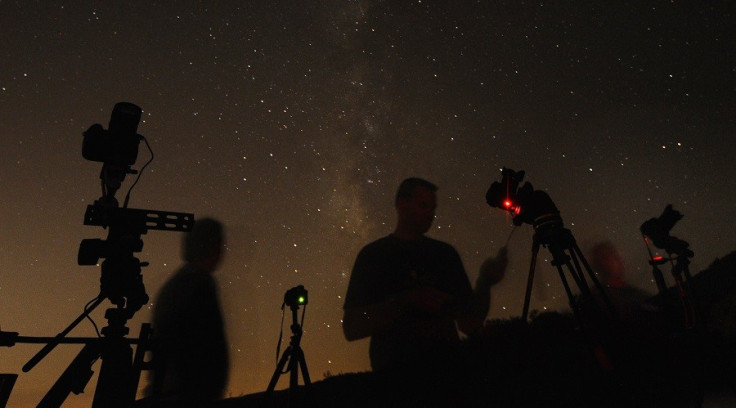Where to Watch Perseid Meteor Shower 12 August, 2013: Clear Skies Ahead for Cosmic Lightshow

The Royal Astronomical Society has said tonight (12 August) is the best night to watch the Perseid meteor shower.
Forecasters are predicting clear skies for the incredible cosmic lightshow, which will see around 60 meteors shooting across the sky.
Perseids is a cosmic event that takes place in August every year. The Royal Astronomical Society said: "The evening of 12 August and morning of 13 August see the annual maximum of the Perseids meteor shower. This year prospects for watching this natural firework display are particularly good."
The event can be seen from most parts of the northern hemisphere. The show is a result of the tail of the Comet Swift-Tuttle, which last passed Earth in 1992.
"This year prospects for the shower are relatively good, as the Moon is a waxing crescent and from most of the UK will have set by 2230 BST, meaning that its light will not interfere significantly with the view," the society said.

"Unlike many celestial events, meteor showers are straightforward to watch and for most people, the best equipment to use is simply your own eyes. Advice from longstanding meteor observers is to wrap up well and set up a reclining chair to allow you to look up at the sky in comfort.
"Although the number of visible meteors is hard to predict accurately, you can expect to see one at least every few minutes. They mostly appear as fleeting streaks of light lasting less than a second, but the brightest ones leave behind trails of vaporised gases and glowing air molecules that may take a few seconds to fade."
Alan Fitzsimmons, from Queen's University Belfast, added: "Every meteor is a speck of comet dust vaporising as it enters our atmosphere at 36 miles per second. What a glorious way to go."
People in the countryside should have no problem seeing tonight's meteor display but those in cities may like to travel further afield to escape light pollution. Here IBTimes UK continues its Where to Watch guide to Perseids.
Birmingham
People in Birmingham should make their way to the Warley Woods, which is where the Birmingham Astronomical Society sometimes meets to watch the night's sky. Located off the A456 Hagley Road going west from Birmingham City Centre, visitors can either drive or get there by bus from the city centre.
Glasgow
The Astronomical Society of Glasgow advises budding astronomers to visit Mugdock Country Park, Whitelees wind farm or the RSPB Lochwinnoch to get the best view of the meteor shower. Those planning to go to Mugdock Park could head over early and enjoy A Few Good Men before the meteor shower as part of the park's Cinema Night.
Dublin
Dublin's Bull Island is a good option for people in Dublin wishing to watch the Perseids. One local posting on an astronomy an astronomy forum said the sky appears to be darker at the golf club at Raheny. The Dublin Stargazers Group has also arranged different outings to the Great Sugar Loaf, about 40 miles south of Dublin, suggesting it is a good place to spot meteorites.
Southampton
The New Forest is around 25 minutes from Southampton and can be reached by car or bus. A member of the online group Stargazers Lounge suggests the Turf Hill for the best views. There is also a car park there on the B3080. Those feeling more adventurous can get the ferry to the Isle of Wight, with the last ferry returning to the city at 11.45pm.
Leeds
Eccup just over six miles north of Leeds city is recommended for its stargazing by the Leeds Astronomical Society, which has New Inn on Eccup Lane as its meeting point. Eccup was also host to BBC's Stargazing Live last year as its secluded surroundings are ideal to watch the night sky, Holt Park Community News said.
© Copyright IBTimes 2024. All rights reserved.























